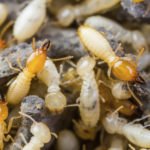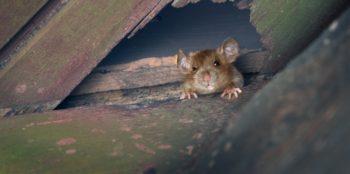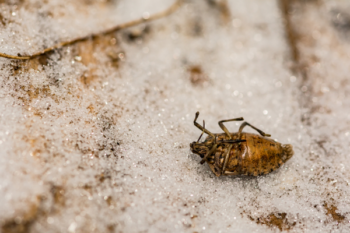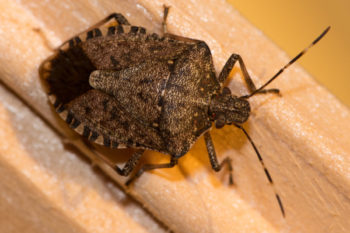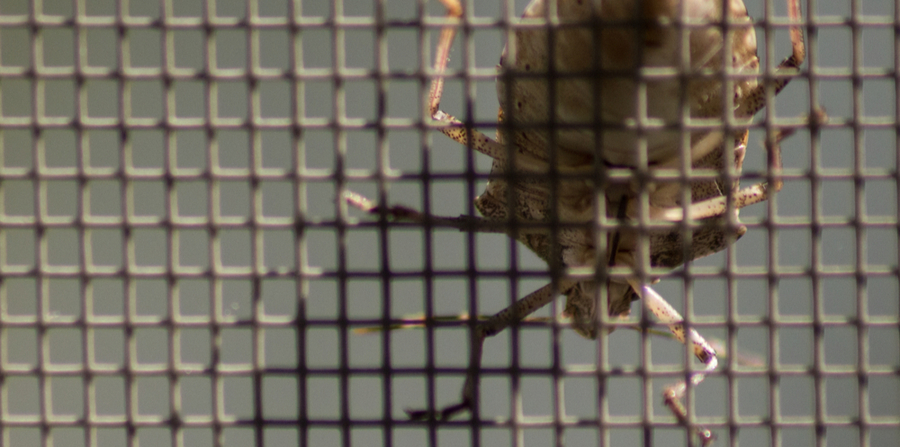
Stink bugs are Michigan’s newest invasive species. These smelly pests originally came to the US from Southeast Asia in 1998. Since then, they’ve spread to nearly every state by stowing away on packages and travelers. Stink bugs seem particularly prevalent in Michigan because our humid, heavily forested environments are perfect for them.
If you feel like you have more stink bugs in your home than most people, it’s probably not your imagination. They really do prefer some homes over others. Here’s what the nuisance pests want, why they’re so attracted to your home, and how to get rid of stink bugs.
What Are Stink Bugs?
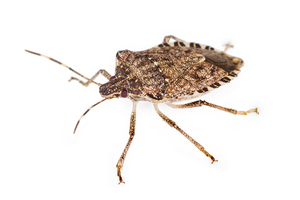
The Stink bug that has invaded Michigan is known as the brown marmorated stink bug, or Halyomorpha halys. The brown marmorated stink bug is a marbled-brown colored bug with smooth shoulders, alternating black and white striping along its abdomen, and white bands along its legs and antennae. Their bodies are shaped roughly like a shield, and they’re almost as wide as they are long. Adult stink bugs only measure up to .5 to .75 inches long. Nymphs generally look red and orangish and get darker with age.
The ominous name comes from the fact that, when threatened, stink bugs secrete a foul-smelling odor. They also release that odor when they’re killed, especially if they’re crushed. Stink bug excrement and secretions can also stain surfaces such as walls and flooring.
Where Did All These Stink Bugs Come From?
Brown marmorated stink bugs are an invasive species originally native to Southeast Asia. They made their way to the US starting around 1998 and spread very quickly. In Michigan, they live around the tree fruits, vegetables, ornamental plants, and legumes they feed on. During the spring and summer, they’re common around farms and gardens where they may be considered serious crop-destroying pests.
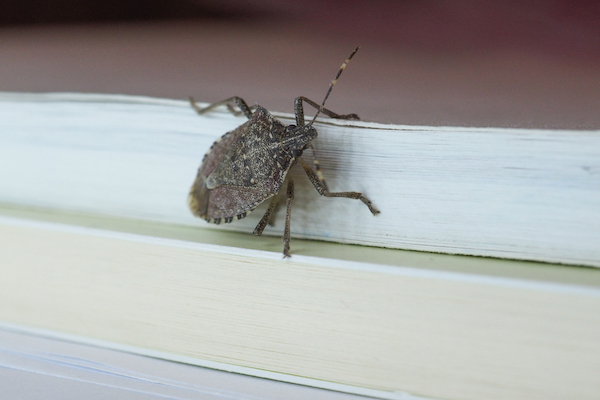
The ideal stink bug hideaway has several distinctive features. First and foremost, it needs to be warm. Stink bugs can’t survive freezing temperatures for long periods of time, even in diapause. Next, it needs to be quiet and inaccessible. Stink bugs are completely defenseless while they’re in diapause, so they need a place where they won’t be in danger. The darkest, tighter, and more secluded the crack, gap, or alcove, the better.
As you might imagine, stink bugs most often take shelter in attics, basements, crawl spaces, and other out-of-the-way locations. They’re especially fond of small, tight cracks they can slip through to stay hidden and safe from would-be predators. When spring comes, the stink bugs simply crawl out from where they got in. Almost all the stink bugs you see in your home in spring were probably there all winter. In spring, stink bugs already got in, and now they’re trying to get out.
Why They Are a Problem
These pests might (certainly!) smell bad, but they are not dangerous. For most homeowners, they’re a minor, if smelly nuisance. Stink bugs feed on outdoor and indoor ornamental plants, such as shrubs, hostas, bushes, and gardens. Their secretions and excrement can also stain furniture and other surfaces such as floors and walls. The bugs may move into homes during the winter, but they don’t nest, reproduce, or lay eggs in homes.
The real reason experts consider stink bugs such an issue is because they feed on vegetable, fruit, nut, legume, and vegetable crops. Crop yields in the Eastern United States have been significantly affected by stink bug damage in the past. In other words, stink bugs are an invasive pest that affects food supplies more than individual homes. Controlling them remains important even if they don’t directly bother you.
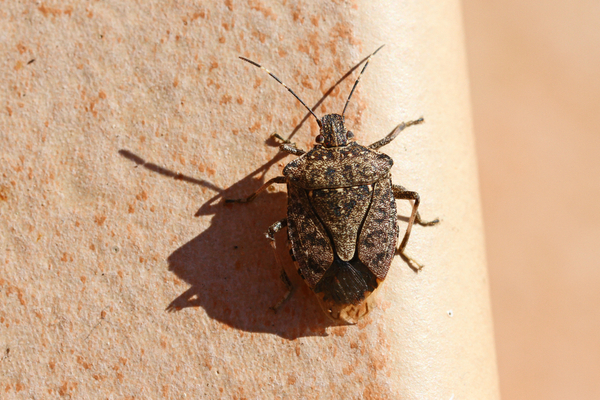
Why Are Stink Bugs in My Home?
Now that you know what stink bugs want, you can probably guess why there are so many near you. Yards with gardens, fruit trees, thriving ornamental plants, or berry bushes attract stink bugs during the spring and summer. Homes that receive a lot of sun exposure during the day are particularly attractive to nearby stink bugs. If you have a thriving yard and your home gets plenty of sun exposure, then it’s a great destination for stink bugs all year!
Stink bugs aren’t actually a threat to you or your home. They can’t bite, sting, spread disease, or even cause structural damage. At worst, the bugs smell pretty gross.
The biggest problem is that they will enter your home starting in fall given the chance. Stink bugs need to shelter in warm environments if they’re going to survive the winter. They’ll find cracks and gaps around the areas where they congregate and use them to enter your home.
How Do You Get Rid of Stink Bugs?
The best way to deal with stink bugs is to keep them out in the first place. Most home infestations happen in early winter when the bugs seek shelter to keep warm. Replace damaged screens and weather stripping, secure window and door framing, and seal gaps in your foundation or walls. Stink bugs crawl into homes through air vents and chimneys so install screens over these openings. Pay special attention to problem areas of your home, such as the attic or basement.

We know it’s tempting, but don’t crush the stink bugs you run into in your home. When stink bugs are crushed, they automatically excrete their foul-smelling liquid odor. Not only does this stink and stain surfaces, but it also attracts other stink bugs! Instead of crushing them, we recommend you vacuum up the stink bugs you find. After you’re finished, throw out the vacuum bag in your outdoor dumpster. Wipe down surfaces where you found stink bugs with soapy water.
Check areas where stink bugs may have hidden when they were congregated. They’re fond of entering buildings through cracks in windowsills, door frames, and baseboards. Wash these areas with soapy water and seal them with caulk. Stink bugs hate the smell of soap (natural enemies, we suppose), so washing their usual entrances will help keep them away. Remember, stink bugs are surprisingly flat, so they can fit through cracks smaller than you’d think.
Stink Bug FAQ
Stink bugs will eat just about any food crop from apples to soybeans to pecans. They are a dangerous nuisance to gardens, orchards and farms capable of attracting others when a food source has been located. They also eat other insects and insect larvae.
No. Their mouths simply aren’t designed to pierce human skin. Beside their defensive (and offensive) smell, stink bugs aren’t harmful to humans unless you are allergic to stink bug toxin.
Yes. They have two sets of wings that they use to find food and mates.
Depends on who you ask. Common descriptions include rotten vegetables, cilantro, skunk spray and burnt tires. The odor – however it appears to you – usually dissipates within and hour.
Get Rid of Stink Bugs For Good
If you’ve got a home infestation and you’re still wondering “How do I get rid of all these stink bugs?” Call or contact Griffin today. We handle stink bugs in Michigan, Ohio and Indiana. We’ll clear your home and keep stink bugs from coming back.

